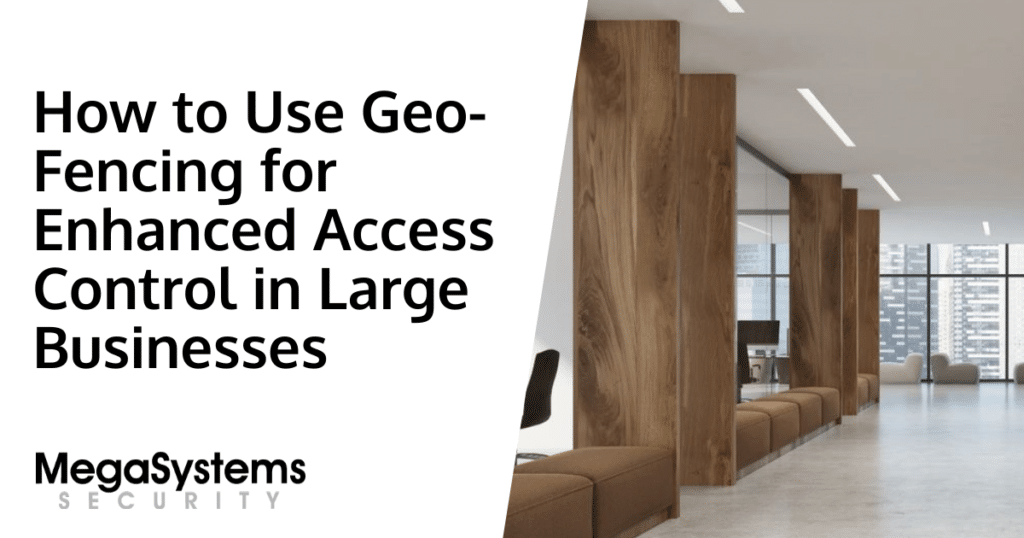Introduction
Geo-fencing is an innovative technology that provides an advanced method of access control for large businesses by creating a virtual boundary around a physical location. Its use has become increasingly prevalent for ensuring enhanced security and surveillance. This article explores in detail how geo-fencing can be leveraged within a commercial setting, including how the technology can be integrated with systems that utilize cameras and other security features. Before diving into the practical guidelines, we will explain each concept in depth so that every reader, regardless of prior technical knowledge, can understand the fundamentals.
The Basics of Geo-Fencing and Access Control
At its core, geo-fencing uses Global Positioning System (GPS) or Radio Frequency Identification (RFID) to create a virtual boundary around a selected geographical area. When entities such as employees, vehicles, or mobile devices cross this defined perimeter, the system can generate an alert. In the context of access control, companies can design these boundaries to manage who can enter or exit particular areas. For example, a business might restrict access to the main entrance after business hours using geo-fencing parameters programmed into its security system.
This method adds greater precision for managing entries and exits in a secured, controlled environment. It also supports real-time monitoring, ensuring that any breach is quickly detected and addressed. By combining geo-fencing with both physical access control and advanced surveillance camera technology, a company can create an ecosystem that strengthens both prevention and quick response measures.
Integration with Surveillance and Camera Systems
Integrating geo-fencing technology with surveillance and camera systems can dramatically enhance a company’s security. When the geo-fence is breached, the surveillance cameras, which are crucial for monitoring in each systems installation, can automatically start recording or alerting security personnel. This tight integration ensures that any unauthorized movement is captured, analyzed, and addressed promptly. For example, a commercial facility can have a dedicated camera setup that works seamlessly with geo-fenced alerts to trigger immediate security responses, such as notifying on-site personnel for further investigation.
In many cases, businesses in areas such as Houston, TX, have adopted these measures as part of a comprehensive security strategy. The installation process of these systems is critical and involves both hardware and software considerations. A secure integration means that the geo-fencing system communicates effectively with cameras, ensuring that there is no gap in the surveillance coverage when an alert occurs. Practical benefits include not only enhanced protection but also a more efficient workflow during incident investigations.
Installing Geo-Fencing within a Commercial System
When it comes to the installation of geo-fencing in large businesses, careful planning is essential. Installation begins with determining the precise geographical boundaries that should be governed by the geo-fence. This process involves creating a digital map overlay using GPS coordinates and other location data that is then integrated into the company’s access control system.
The installation stage typically requires professional expertise, especially if a commercial-grade surveillance and security system is being implemented. Throughout the installation process, several key factors such as network connectivity, data accuracy, and hardware compatibility must be considered. For instance, in Houston and across TX, there are many experienced professionals who can guide businesses through the intricate setup, ensuring a robust and reliable operational system. Benefits of professional installation include higher accuracy, fewer technical glitches, and a system that is more resistant to tampering.
How Geo-Fencing Enhances Daily Operations
Geo-fencing helps address common challenges in access control management. One of the most significant advantages is its ability to serve as a second layer of authentication. In addition to traditional credentials such as key cards or PIN codes, the physical location of an employee or visitor is also verified. This dual verification is essential in environments where security is paramount.
The technology also provides a detailed log of movements that can be used for internal audits or forensic analysis. Each time a system event is triggered by a geo-fence breach, the event is recorded with a timestamp and location information, proving critical in post-incident evaluations. The inclusion of these features promotes accountability and helps prevent fraudulent access attempts.
Strategies for Maximizing Geo-Fence Effectiveness
For businesses looking to use geo-fencing effectively, several strategies can be implemented. First, it is crucial to define clear boundaries that align with the company’s operational zones. This involves mapping out areas that are sensitive and require greater scrutiny. Additionally, periodic refinements and assessments of the geo-fence are important to ensure its continued effectiveness. Businesses must monitor emerging trends in geo-fencing technology to keep their systems up to date.
The integration of geo-fencing with other access control measures further strengthens security. For example, pairing geo-fence alerts with automated door locks, alarm systems, and surveillance cameras results in a comprehensive, multi-layered security approach. A good strategy is choosing a solution that offers both real-time monitoring and detailed reporting, ensuring that security teams have all the necessary resources to respond swiftly. When evaluating options, consider pros and cons related to cost, ease of expansion inside various systems, and the compatibility with existing infrastructure.
Considerations Between DIY and Professional Solutions
Business owners may often wonder about handling the installation and configuration of geo-fencing either on their own or with professional support. DIY solutions might seem attractive due to their lower cost and faster implementation, but they often lack the comprehensive integration needed for commercial applications. In contrast, professional installation services offer customized solutions catering to the specific needs of large enterprises. They provide detailed guidance through every step, from initial planning and system design to the integration with other security and surveillance tools, including advanced cameras that monitor specific zones.
Understanding the complexities of systems in a large business, such as those common in Houston or TX, underscores the importance of employing professionals who are well-versed in modern security challenges. A professional team can not only ensure that installation is executed correctly but also provide ongoing support and maintenance. This support is critical in a landscape where digital threats and physical intrusions are continuously evolving.
The Importance of Monitoring and Continuous Improvement
Once geo-fencing is set up, continuous monitoring is crucial. Large businesses benefit not only from the initial robust installation but also from consistent evaluation and improvements over time. Combining the geo-fencing system with surveillance cameras and other monitoring systems ensures that real-time alerts are actionable and that any breaches are swiftly managed. Regularly reviewing system logs, access reports, and maintenance data can provide insights into both normal operations and potential vulnerabilities. Such reviews contribute to making informed decisions on upgrades or changes needed for enhanced security.
Furthermore, monitoring offers additional benefits such as compliance with safety regulations and a documented history of security activities, which is frequently required by regulatory agencies. By keeping detailed logs and archives, businesses are better prepared for audits and investigations, ensuring long-term security assurance and trust among stakeholders.
Conclusion
Geo-fencing stands as a transformative tool for enhancing access control in large businesses. Its ability to create secure, location-based perimeters has revolutionized the way commercial establishments manage access and maintain robust security. From the initial stages of careful installation and integration with critical surveillance systems to the practical application of dual authentication and real-time monitoring, geo-fencing offers a comprehensive approach to protecting assets and people. Embracing professional installation and continuous improvement strategies further ensures that the system remains effective against evolving threats. Whether operating in bustling urban centers like Houston in TX or other major commercial areas, geo-fencing empowers organizations with the detailed control they need to safeguard their property and maintain a high standard of security.


